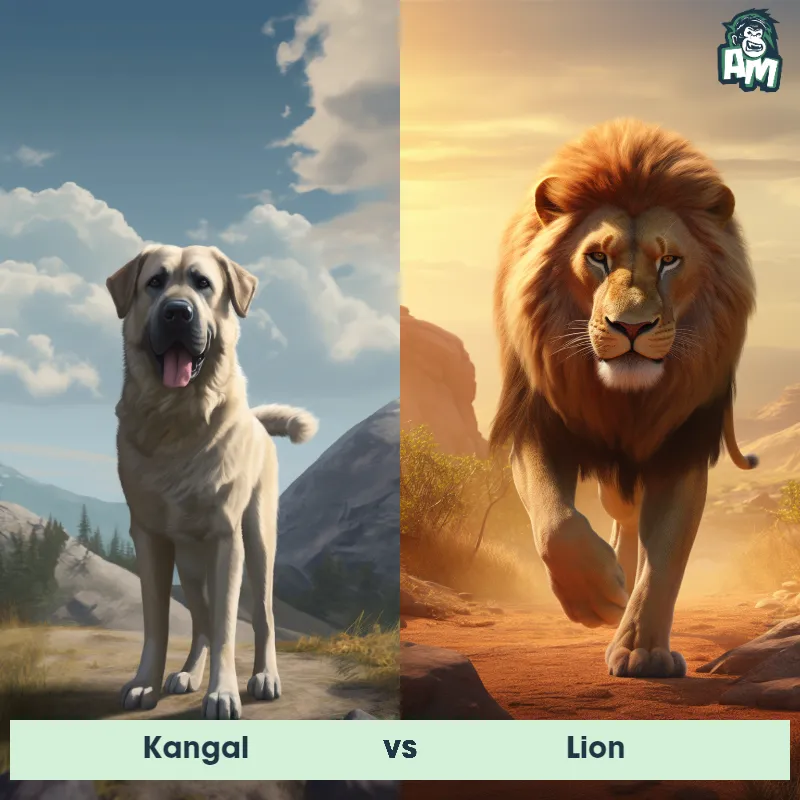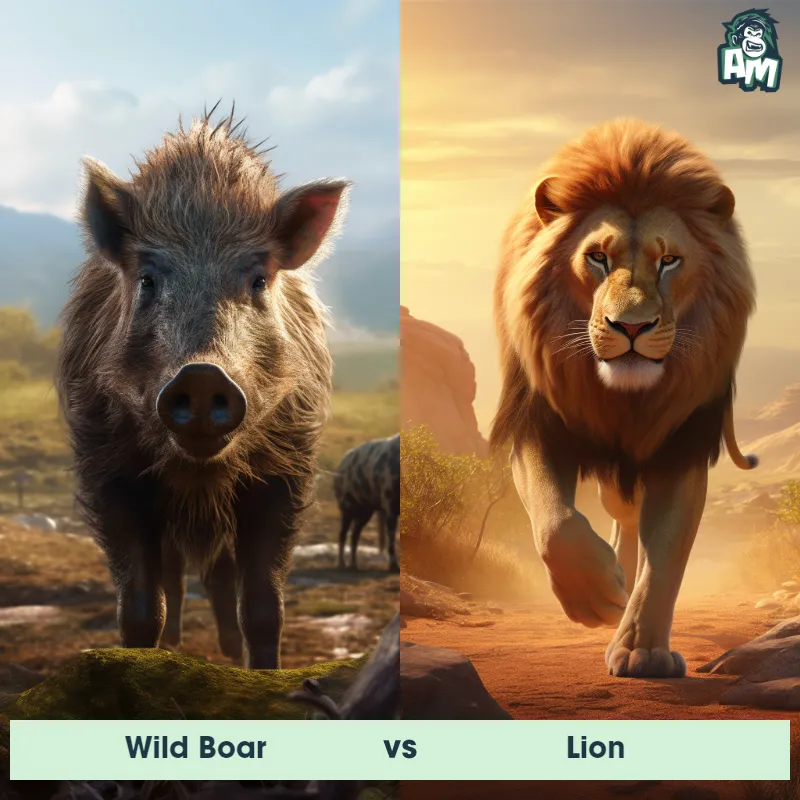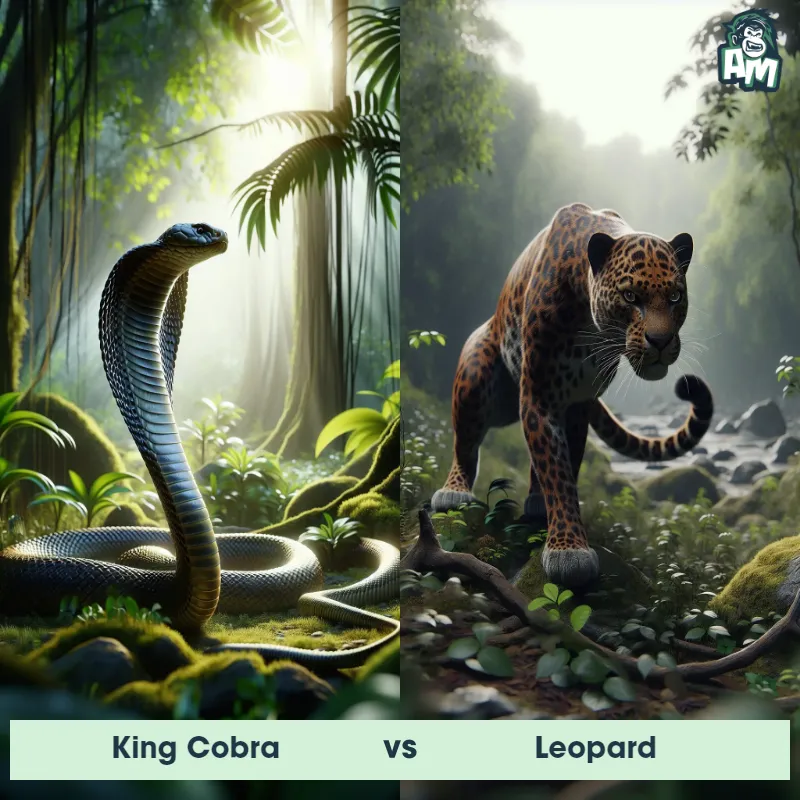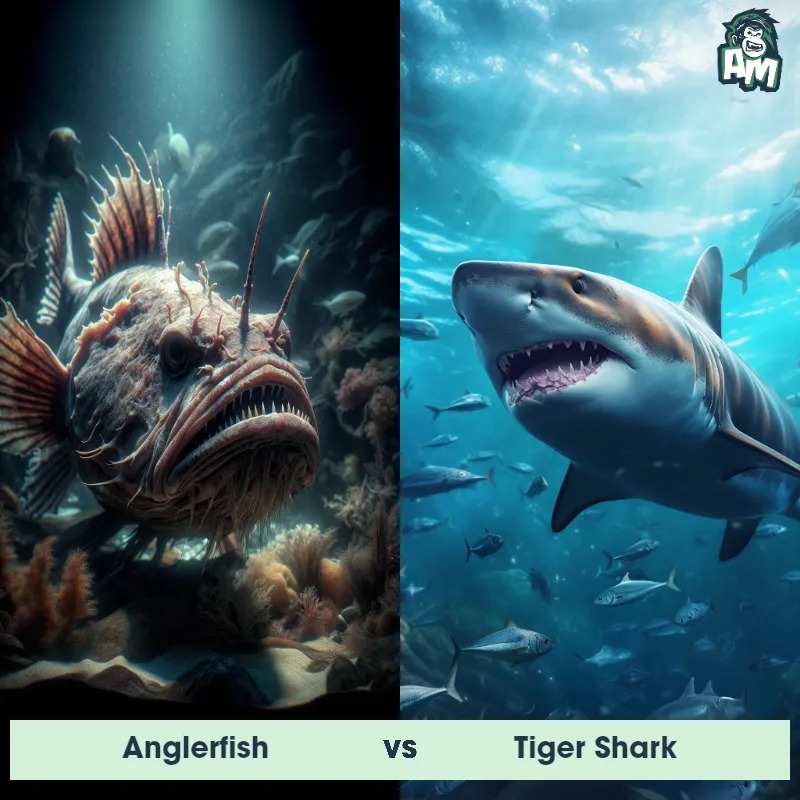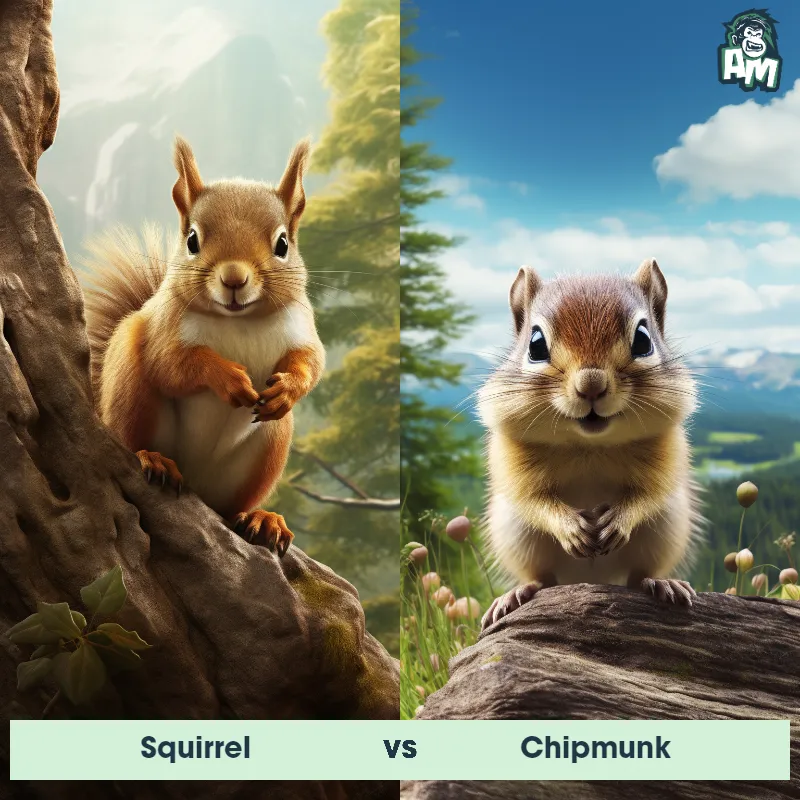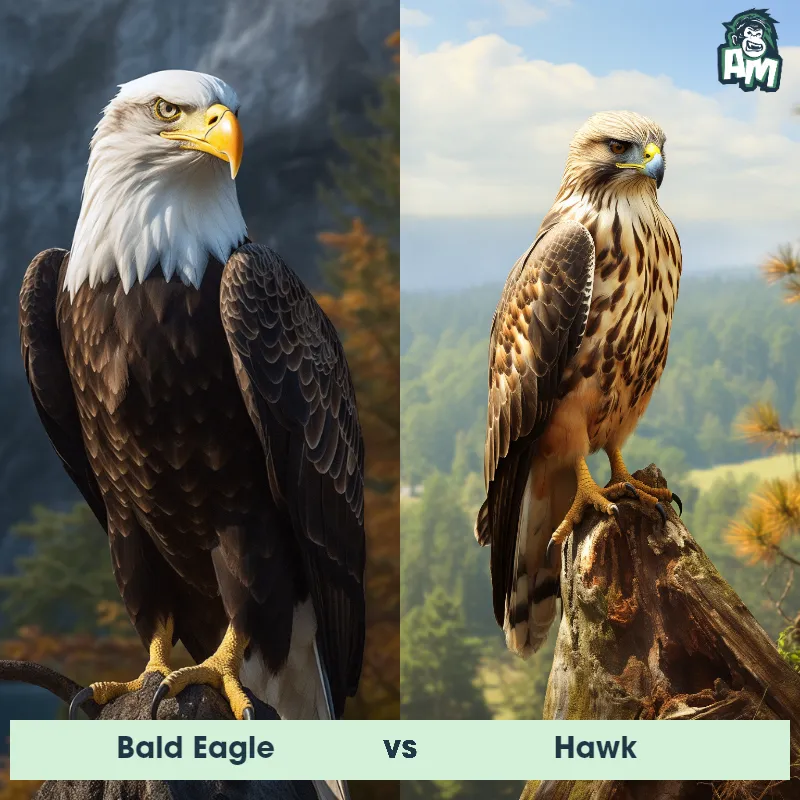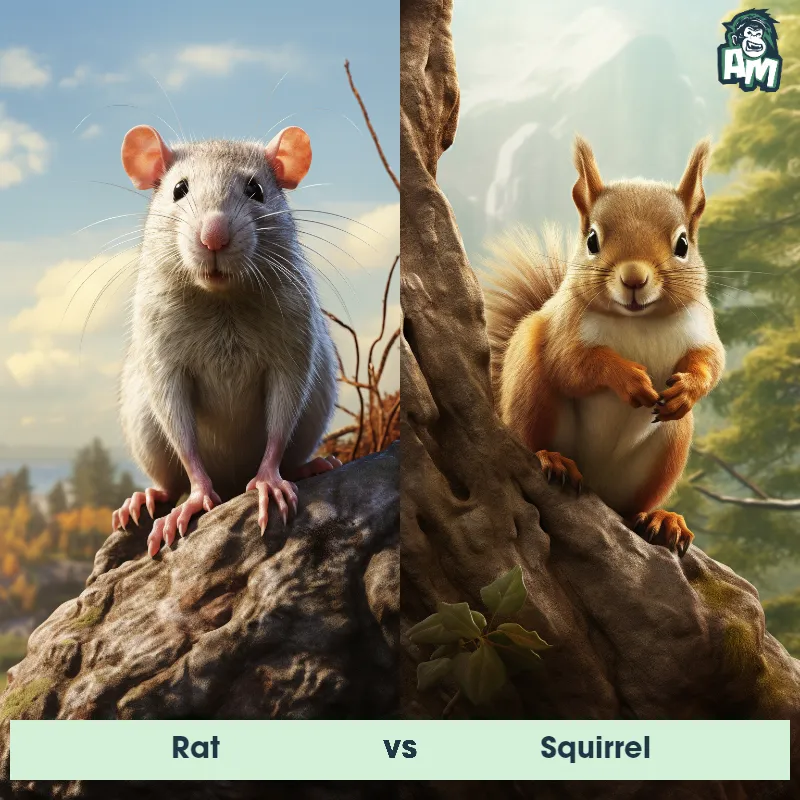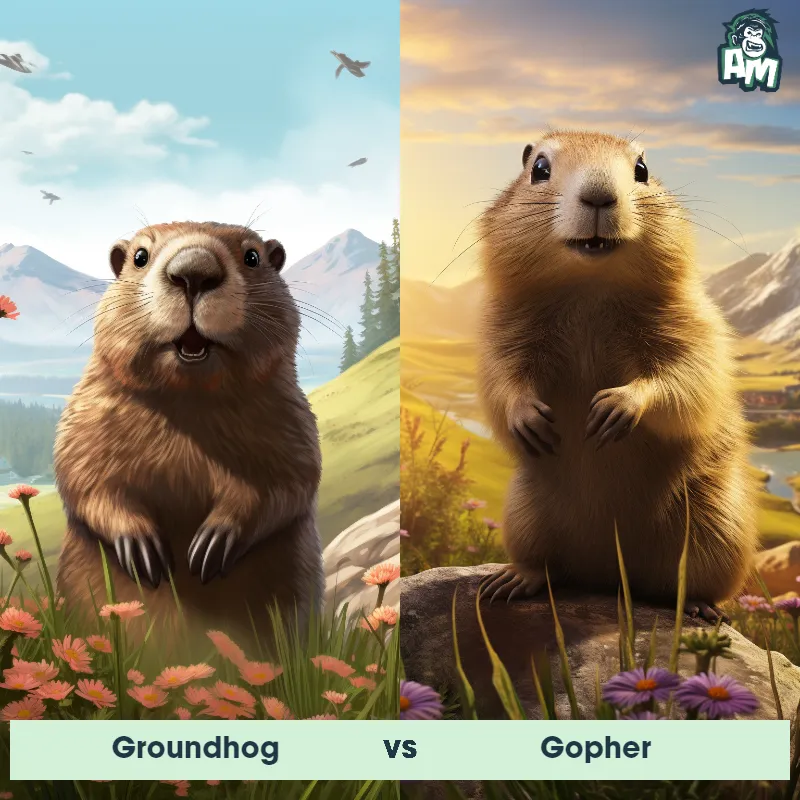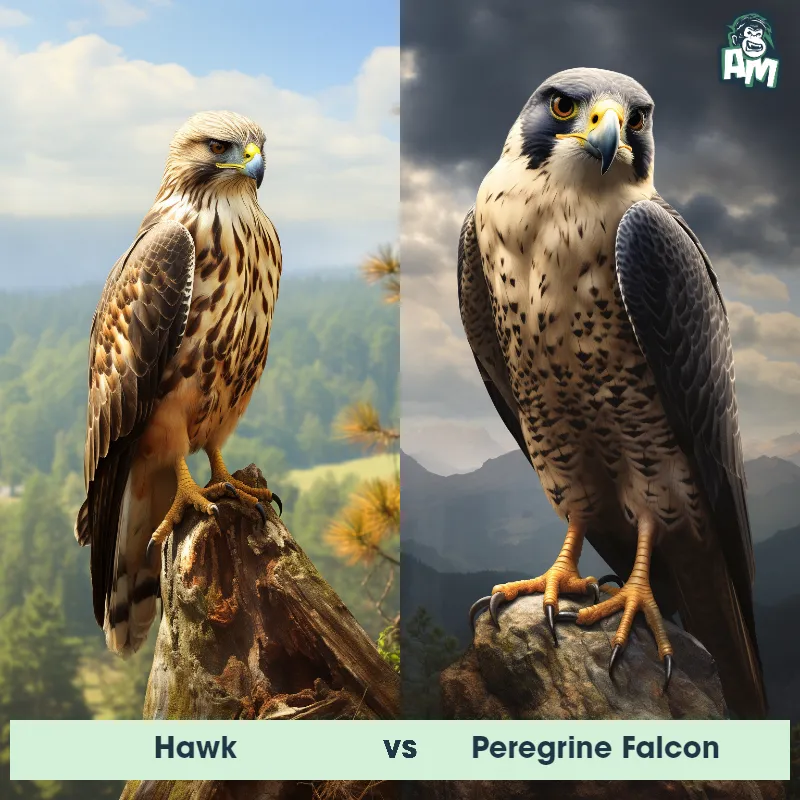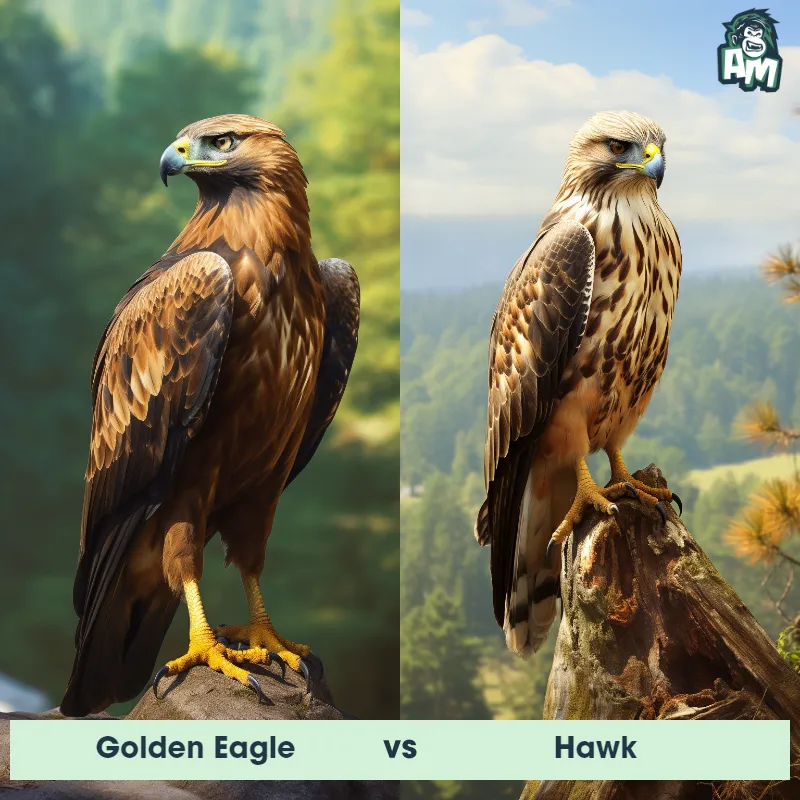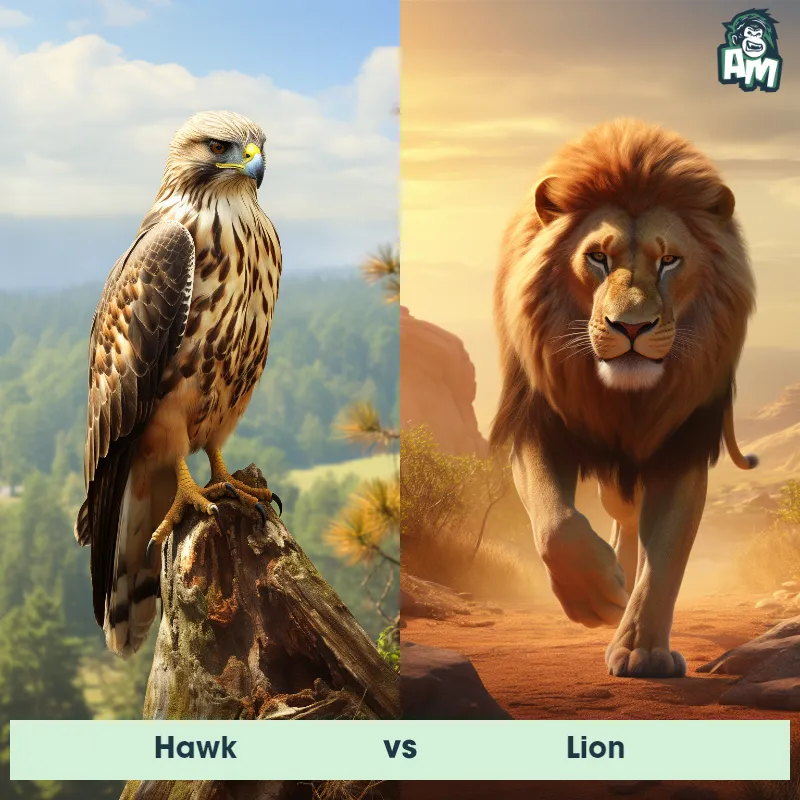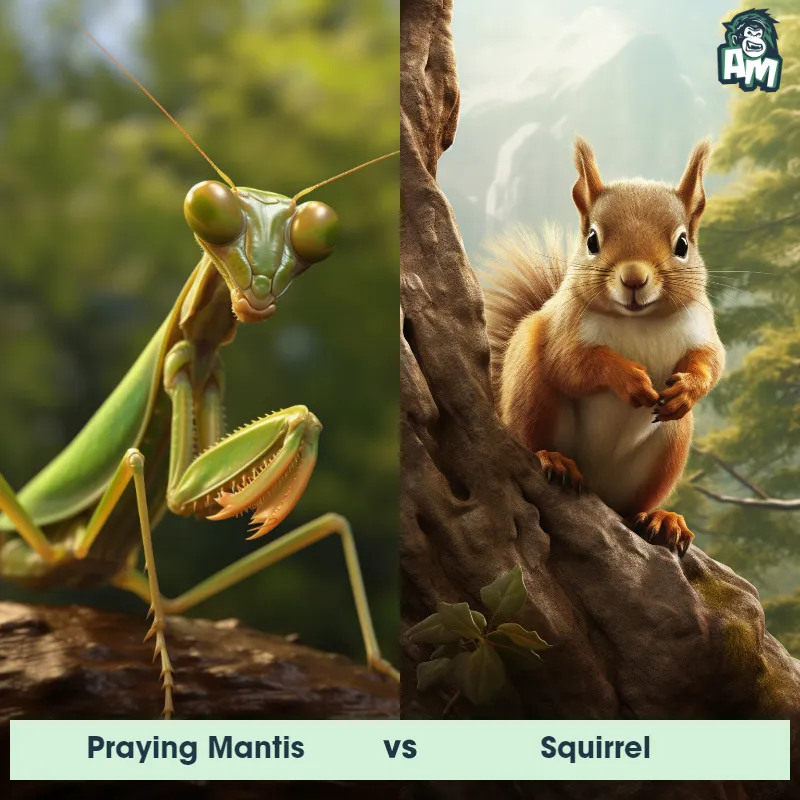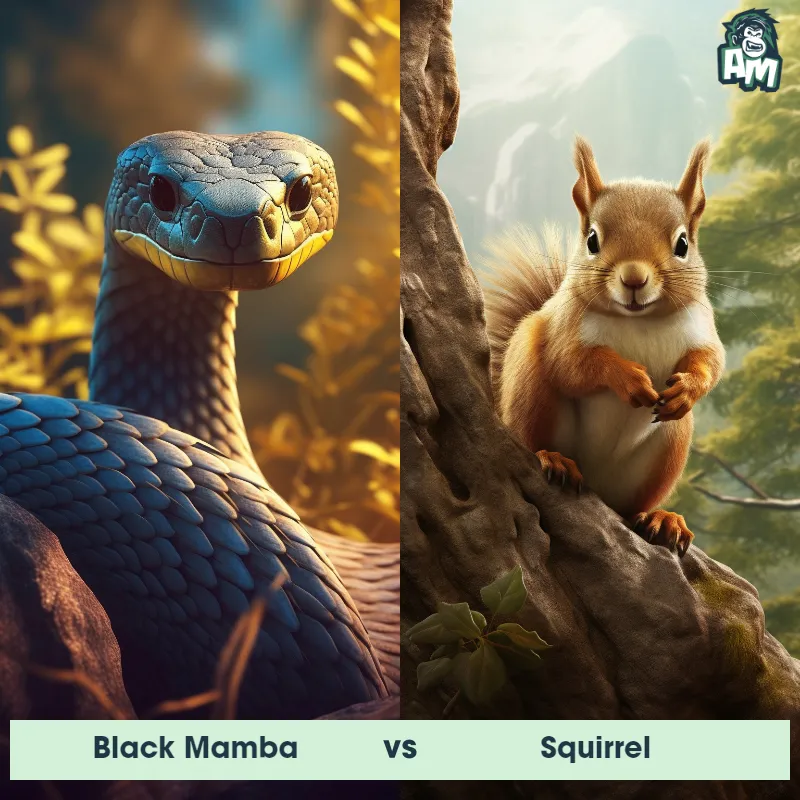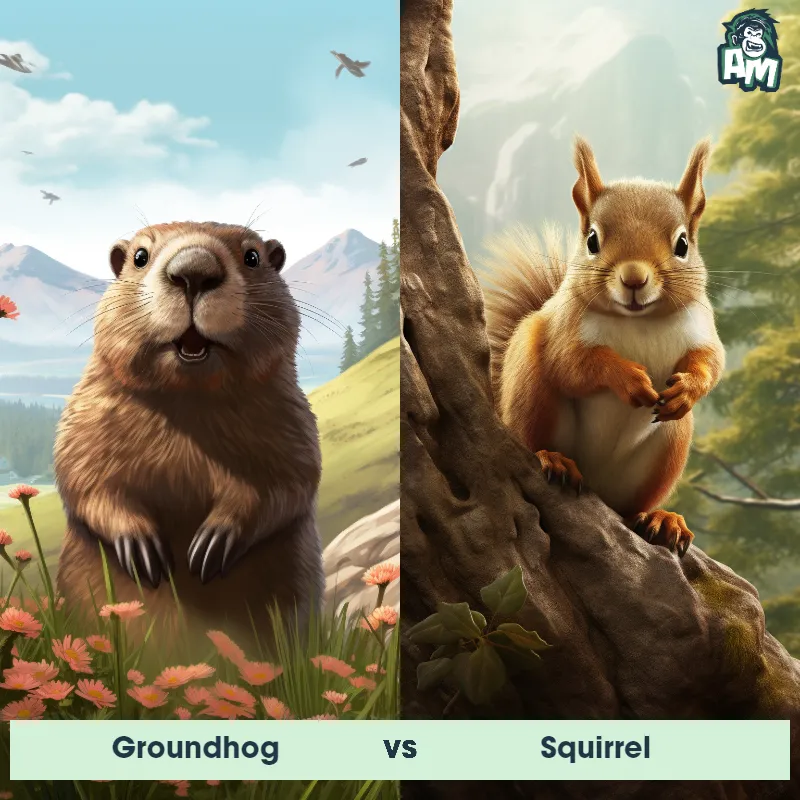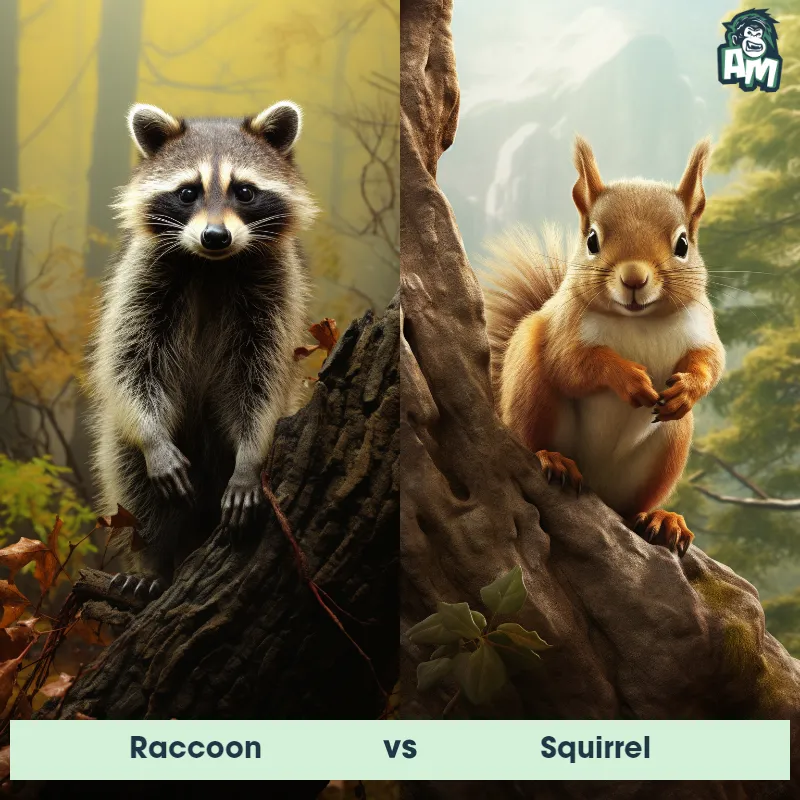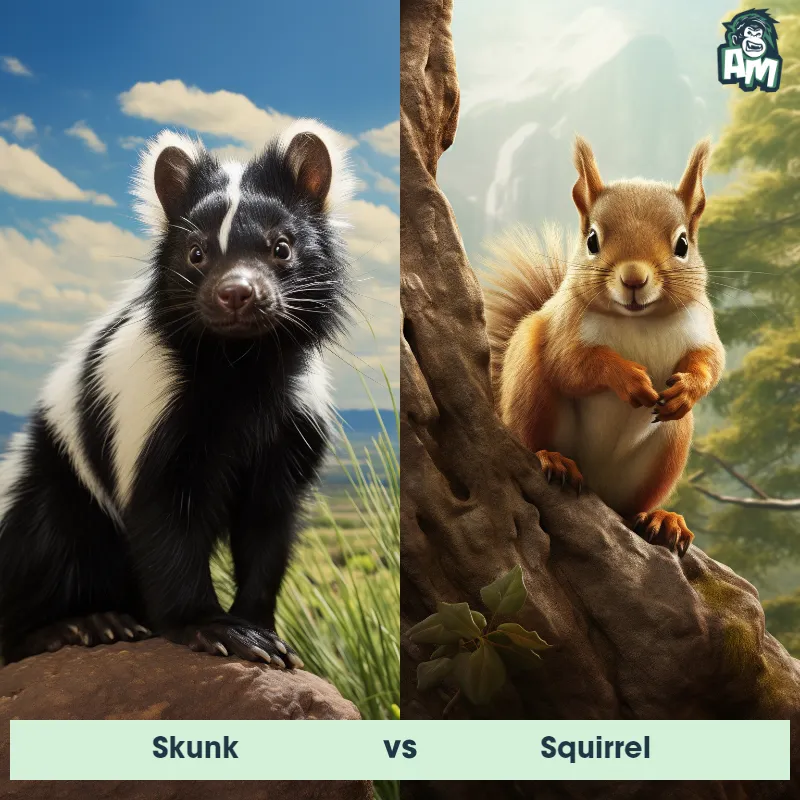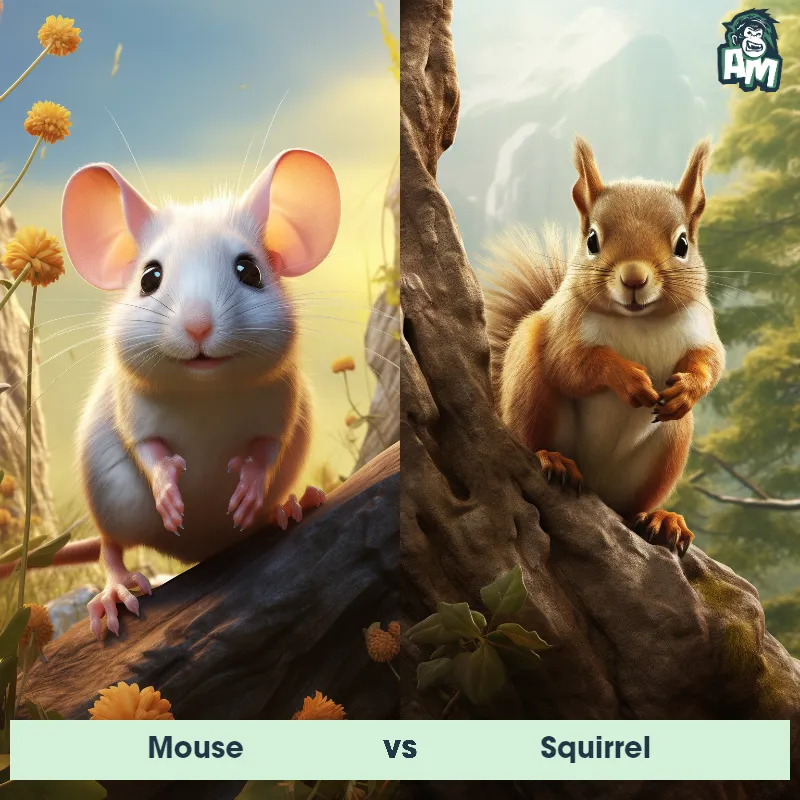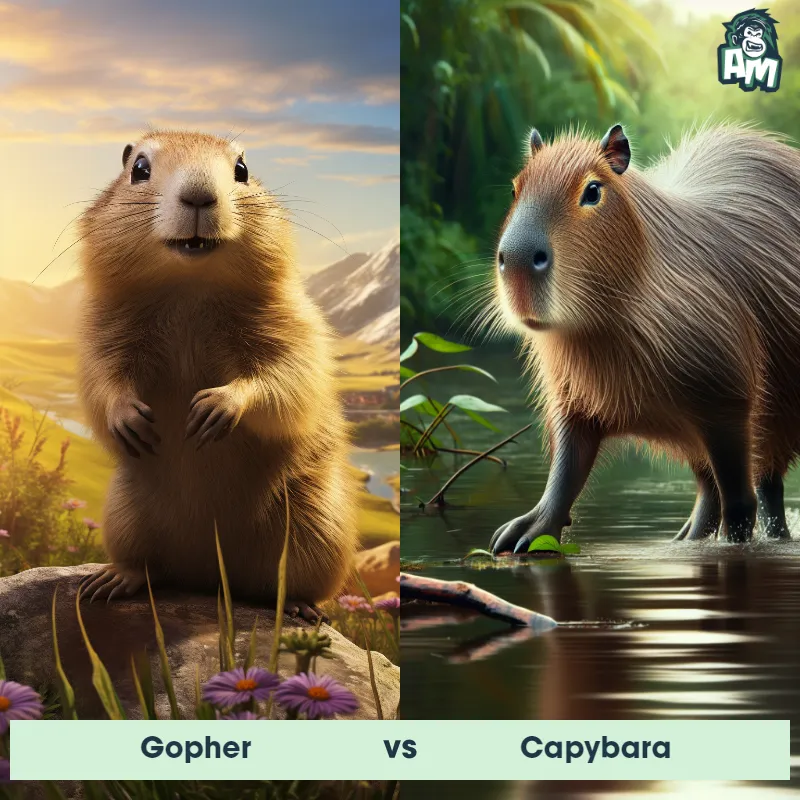Hawk vs SquirrelSee Who Wins

Ladies and gentlemen, welcome to this thrilling matchup between two of Mother Nature's fierce competitors! We have a Hawk squaring off against a Squirrel in what promises to be an intense three-round battle. The arena is buzzing with excitement, and anticipation is in the air as these natural rivals prepare to go head-to-head. Hold onto your seats, folks, because this fight is about to take flight!
Contender 1: Hawk
The hawk is a bird of prey known for its sharp vision, hooked beak, and powerful talons. Hawks are found all over the world except in polar regions. They come in a wide range of sizes, with some species being as small as a pigeon, while others can grow to a wingspan of up to 55 inches. Their diet primarily consists of small mammals, birds, and reptiles. Hawks are generally solitary creatures, often seen soaring high in the sky in search of their next meal.
Fun Fact: Hawks have some of the sharpest eyesight in the animal kingdom, with some species able to spot a mouse from a height of a mile.
Contender 2: Squirrel
The Squirrel is a small to medium-sized rodent, known for its bushy tail and agile climbing abilities. They have a slender body covered in soft, silky fur and vary significantly in color, from red and brown to grey and black, depending on the species. Squirrels are arboreal creatures, meaning they spend a significant amount of time in trees, where they forage for nuts and seeds, their primary diet.
Fun Fact: Interestingly, squirrels plant thousands of new trees each year simply by forgetting where they buried their acorns and nuts, playing a crucial role in forest regeneration.
Matchup Stats
| Hawk | Squirrel | |
|---|---|---|
| Size | Up to 22 inches (56 cm) in length, wingspan up to 55 inches (140 cm) | 5-20 inches (13-51 cm) |
| Weight | Up to 4.5 lbs (2 kg) | 0.5-1.5 lbs (0.2-0.7 kg) |
| Speed | 150mph (241km/h) | 12 mph (19 km/h) |
| Key Strength | Sharp vision, hooked beak, and powerful talons | Agility and Speed |
| Biggest Weakness | Limited ground mobility | Small Size and Lack of Defensive Weapons |
Current Votes
Hawk vs Squirrel
See Who Wins
View More Matches
Looking For More?
Similar Matches
Scientific Stats
| Hawk | Squirrel | |
|---|---|---|
| Scientific Name | Accipitridae | Sciuridae |
| Family | Accipitriformes | Rodentia |
| Habitat | Forests, deserts, grasslands, fields, mountains, and coastal regions | Forests, Woodlands, Urban and Suburban Areas |
| Geography | Worldwide except in polar regions | Worldwide except Antarctica |
| Diet | Small mammals, birds, and reptiles | Nuts, Seeds, Fruits, Insects, and Occasionally Bird Eggs |
| Lifespan | 10 years - 30 years | 5 years - 12 years |
Key Differences between Hawk and Squirrel
- Beak and talons: Hawks possess sharp, curved beaks and powerful talons, which they use for capturing and feeding on prey, whereas Squirrels have shorter, straighter claws and a more rounded snout.
- Tail shape: Hawks typically have long, rounded tails that aid in maneuvering during flight, whereas Squirrels have bushy, cylindrical tails that provide balance and act as a communication signal to other squirrels.
- Eye placement: Hawks have forward-facing eyes, similar to humans, providing them with binocular vision to accurately spot and track prey from a distance, whereas Squirrels have eyes positioned more to the sides of their head, granting them a wider field of view to detect predators approaching from multiple angles.
- Size: Hawks are significantly larger than Squirrels, with an average wingspan ranging from 3 to 4 feet, while Squirrels generally measure around 6 to 10 inches in length.
- Body shape: Hawks have a streamlined body shape with powerful wings adapted for flight, while Squirrels possess a more compact and agile body structure, designed for tree climbing and jumping.
- Color: Hawks typically exhibit various shades of brown, black, and/or gray, often with distinctive patterns on their feathers, whereas Squirrels display a more diverse range of colors, including brown, gray, red, and even black.




